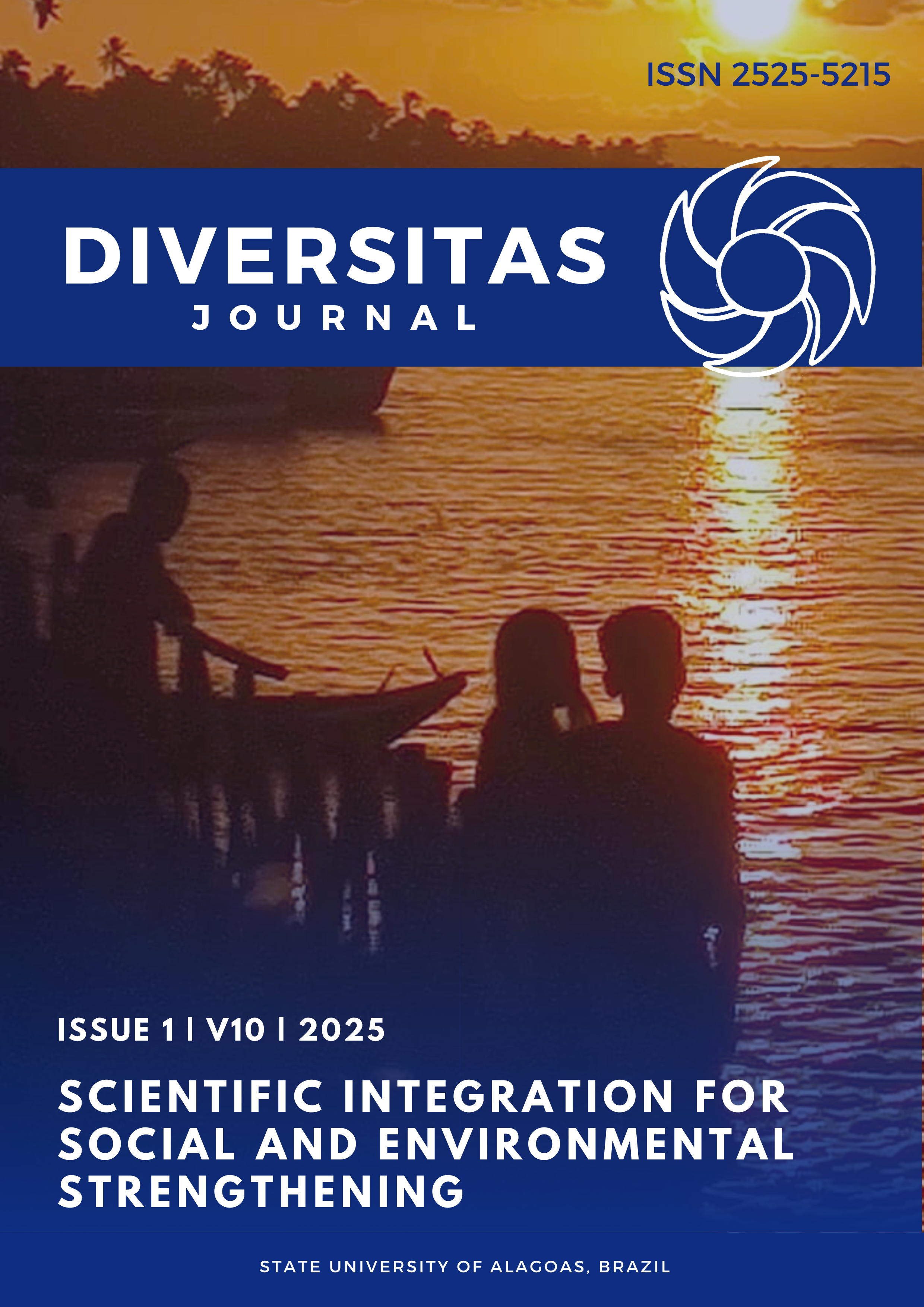Unraveling the link: math anxiety’s role in the relationship between math self-efficacy and math achievement
DOI:
https://doi.org/10.48017/dj.v10i1.2994Keywords:
course anxiety, task anxiety, test anxietyAbstract
Teachers and parents closely monitor students' progress in mathematics, recognizing its pivotal role in shaping their perspectives and unlocking diverse career opportunities. Despite extensive research aimed at enhancing mathematical achievement, certain factors remain crucial, notably mathematics anxiety and self-efficacy. This study investigates the interplay among these constructs, particularly focusing on the role of mathematics anxiety in mediating the relationship between math self-efficacy and overall mathematical performance among senior high school students. Involving 471 participants, this research employed a survey-based approach utilizing an adapted questionnaire. Correlation analysis revealed a significant association between math self-efficacy and academic achievement. Regression analysis further elucidated that mathematics anxiety serves as a partial mediator in this relationship. Notably, the findings suggest that reducing levels of math anxiety strengthens the positive influence of math self-efficacy on students' mathematical performance. These insights offer valuable implications for educational interventions aimed at fostering a supportive environment conducive to mathematical learning and achievement
Metrics
References
Alexander, L., Martray, C. (1989). The development of an abbreviated version of the Mathematics Anxiety Rating Scale. Measurement and Evaluation in Counseling and Development, 22, pp. 143-150
Ashcraft, M. H., & Moore, A. M. (2009). Mathematics anxiety and the affective drop in performance. Journal of Psychoeducational Assessment, 27, 197-205. doi:10.1177/0734282908330580
Baron, R. M., & Kenny, D. A. (1986). The moderator-mediator variable distinction in social psychological research: Conceptual, strategic and statistics consideration. Journal of Personality & Social Psychology, 51(6)1173-1182.
Bandura, A. (1977). Self-efficacy: toward a unifying theory of behavioral change. Psychological Review, 84(2), 191-215.
Bandura, A. (1997). Self-efficacy. The exercise of control. New York: Freeman
Beilock, S. L. (2008). Math performance in stressful situations. Current Directions in Psychological Science, 17, 339-343. doi:10.1111/j.1467-8721.2008.00602.x
Beswick, K. (2012). Teachers’ beliefs about school mathematics and their role in professional development. Mathematics Teacher Education and Development, 14(2), 1-16.
Borgonovi, F., & Pokropek, A. (2019). Emotional well-being, self-efficacy and task performance: A study of gender differences in 33 countries. Journal of Adolescence, 70, 62-74. https://doi.org/10.1016/j.adolescence.2018.11.002
Carey, E., Hill, F., Devine, A., & Szücs, D. (2017). The modified abbreviated math anxiety scale: A valid and reliable instrument for use with children. Frontiers in Psychology, 8, 11. https://doi.org/10.3389/fpsyg.2017.00011
Ching, B. H. H. (2020). Mathematics anxiety and working memory: Longitudinal associations with mathematical performance in Chinese children. Contemporary Educational Psychology, 51, 99-113. https://doi.org/10.1016/j.cedpsych.2017.06.006
Credé, M., & Walton, G. M. (2011). Mathematics self-efficacy and persistence in college math courses. Educational Psychology, 46(4), 258-268.
Frenzel, A. C., Pekrun, R., & Goetz, T. (2017). Measuring mathematics self-efficacy beliefs with the Mathematics Self-Efficacy Scale (MSES): A review and critical evaluation. Educational Psychology Review, 29(2), 334-359.
Geertrui, van der S., Renske, B., & Eddie, F. (2015). The influence of self-efficacy beliefs on students' mathematics anxiety: A review of the literature. Educational Psychology Review, 27(2), 199-234.
Gresham, G. (2007). A study of mathematics anxiety in pre-service teachers. Early Childhood Education Journal, 35, 181-188. doi:10.1007/s10643-007-0174-7
Gu, Q., & Qiu, Y. (2016). The role of self-efficacy in mathematics learning: A meta-analysis. Journal of Educational Psychology, 108(3), 448-461.
Harari, R. R., Vukovic, R. K., & Bailey, S. P. (2013). Mathematics anxiety in young children: An exploratory study. The Journal of Experimental Education, 81, 538-555. doi:10.1080/00220973.2012.727888
H R P Negara, E. Nurlaelah1, Wahyudin, T Herman, and M Tamur (2021). Journal of Physics: Conference Series 1882 012050
Kabiri, M. & Kiamanesh, A. R. (2004). The role of self-efficacy, anxiety, attitudes
and previous math achievement in students' math performance. In Proceedings of the Third International Biennial SELF Research Conference, Available at http://www.self.ox.ac.uk/Conferences/2004_Kabiri_Kiamenesh.pdf
Liu, X. & Koirala, H. (2009). The effect of mathematics self-efficacy on mathematics achievement of high school students. In: Proceedings of the NERA Conference 2009. http://digitalcommons.uconn.edu/cgi/viewcontent.cgi?article=1029&context=nera_2009
Maloney, E. A., & Beilock, S. L. (2018). Unleashing the power of girls in math and science: A blueprint for change. Cambridge University Press.
May, D. K. (2009). Mathematics Self-Efficacy and Anxiety Questionnaire (Doctoral dissertation, University of Georgia National Council of Teachers of Mathematics. (2020). Principles to Actions: Ensuring Mathematical Success for All. NCTM.
Núñez-Peña, M. I., Suárez-Pelayo, J. M., & Tourón, J. (2019). A comprehensive intervention program to reduce mathematics anxiety and enhance mathematics achievement in secondary education. International Journal of Educational Research, 94, 18-32.
Organisation for Economic Co-operation and Development. (2019). PISA 2018 Results (Volume I): What Students Know and Can Do. OECD Publishing. https://doi.org/10.1787/5f07c754-en
Pajares, F. (2002). Self-efficacy beliefs of mathematics teachers. Journal of Educational Psychology, 94(2), 307-311.
Papadopoulos, C., Efthymiou, G., & Pitta-Pantazi, D. (2020). Mathematics anxiety in adolescence: A review of the literature and implications for intervention. Frontiers in Psychology, 11, 1742.
Passolunghi, M. C., Cargnelutti, E., & Tomasetto, C. (2020). The role of anxiety and working memory in the early grades of school: The interplay between cognitive and emotional factors. Child Development Perspectives, 14(3), 163-168. https://doi.org/10.1111/cdep.12375
Pekrun, R., Lichtenfeld, S., Marsh, H. W., Murayama, K., & Goetz, T. (2020). Achievement emotions and academic performance: Longitudinal models of reciprocal effects. Child Development, 88(5), 1653-1670. https://doi.org/10.1111/cdev.12835
Pletzer, B., Kronbichler, M., Nuerk, H. C., & Grabner, R. H. (2023). Math anxiety and its effect on cognitive processing: A neurocognitive review. PLOS ONE, 18(4), e0264567. https://doi.org/10.1371/journal.pone.0264567 amirez, G., Shaw, S. T., & Maloney, E. A. (2016). Math anxiety: Past research, promising interventions, and a new interpretation framework. Educational Psychologist, 51(3-4), 145-157. https://doi.org/10.1080/00461520.2016.1162244
Richardson, F. C., & Suinn, R. M. (1972). The Mathematics Anxiety Rating Scale: Psychometric data. Journal of Counseling Psychology, 19, 551-554. doi:10.1037/h0033456
Royal Society. (2024). Mathematical Futures Programme. Royal Society Publishing. https://royalsociety.org
Schunk, D. H., & Pintrich, P. R. (2007). Motivation in education: Theory, research, and applications (3rd ed.). Merill Prentice Hall.
Schunk, D. H., & Pajares, F. (2009). Self-efficacy and education. Educational Psychologist, 44(1), 163-171.
Supekar, K., Iuculano, T., Chen, L., & Menon, V. (2015). Remediation of childhood math anxiety and associated neural circuits through a targeted tutoring intervention. Journal of Neuroscience, 35(36), 12574-12583. https://doi.org/10.1523/JNEUROSCI.0786-15.2015
Turner, E. M., Gustafson, K. M., & West, T. M. (2019). The effects of a self-compassion intervention on mathematics exam anxiety and performance in middle school students. The Journal of Educational Psychology, 111(8), 1276-1289.
Usher, E. L., & Pajares, F. (2009). Sources of self-efficacy in mathematics: A validation study. Contemporary Educational Psychology, 34(1), 89-101. https://doi.org/10.1016/j.cedpsych.2008.09.002
Villaver, L.G. (2014). Experiential Learning Approach to Mathematics Performance and Attitude. Unpublished thesis, Central Mindanao University.
Wigfield, A., & Eccles, J. S. (2000). Mathematics anxiety in elementary and middle school students. Journal of Educational Psychology, 92(2), 60-70.
Wilkins, J. L., & Ma, X. (2002). Predicting student growth in mathematical content knowledge. The Journal of Educational Research, 95, 288-298.
Wu, S. S., Barth, M., Amin, H., Mclarne, V., & Menon, V. (2012). Math anxiety in second and third graders and its relation to mathematics achievement. Frontiers in Psychology, 3, 1-11. doi:10.3389/fpsyg.2012.00162
Zientek, L. R., Yetkiner, Z. E., & Thompson, B. (2019). Self-efficacy in mathematics: A longitudinal analysis of individuals’ mathematics self-efficacy during the middle school years. Journal of Experimental Education, 87(2), 345-362. https://doi.org/10.1080/00220973.2017.1409187
Downloads
Published
How to Cite
Issue
Section
License
Copyright (c) 2025 Jonathan Wong, Carmen M. Ramo

This work is licensed under a Creative Commons Attribution 4.0 International License.
The Diversitas Journal expresses that the articles are the sole responsibility of the Authors, who are familiar with Brazilian and international legislation.
Articles are peer-reviewed and care should be taken to warn of the possible incidence of plagiarism. However, plagiarism is an indisputable action by the authors.
The violation of copyright is a crime, provided for in article 184 of the Brazilian Penal Code: “Art. 184 Violating copyright and related rights: Penalty - detention, from 3 (three) months to 1 (one) year, or fine. § 1 If the violation consists of total or partial reproduction, for the purpose of direct or indirect profit, by any means or process, of intellectual work, interpretation, performance or phonogram, without the express authorization of the author, the performer, the producer , as the case may be, or whoever represents them: Penalty - imprisonment, from 2 (two) to 4 (four) years, and a fine. ”


















